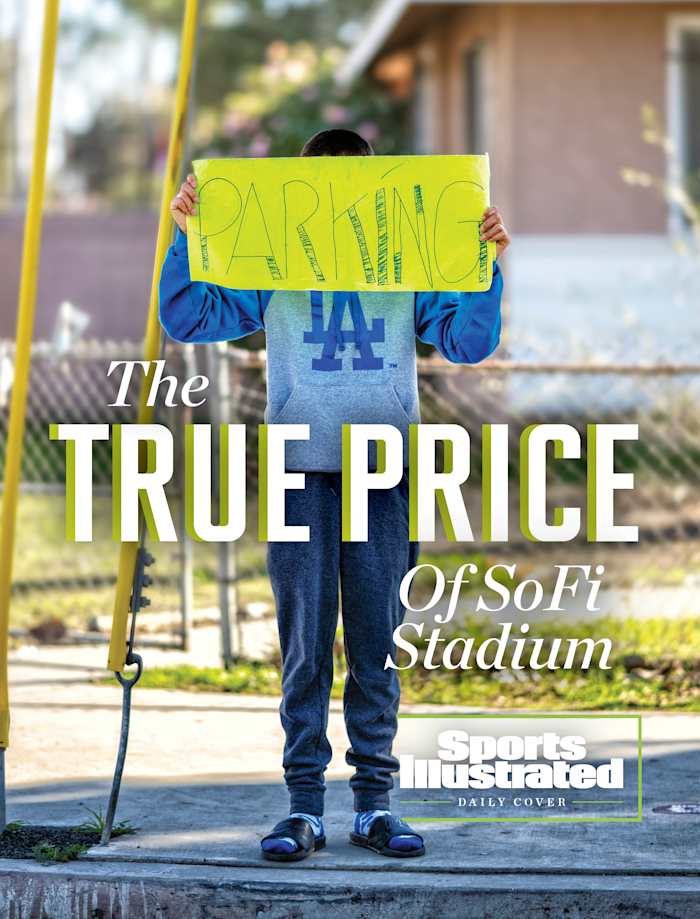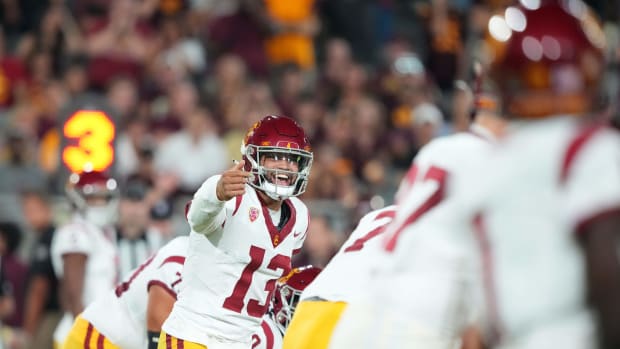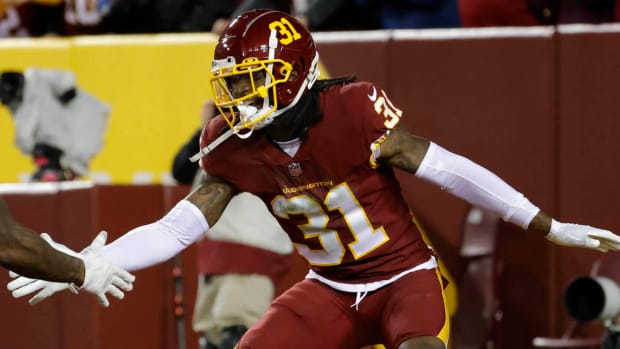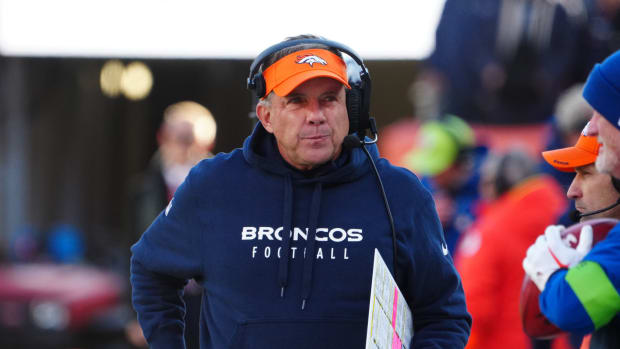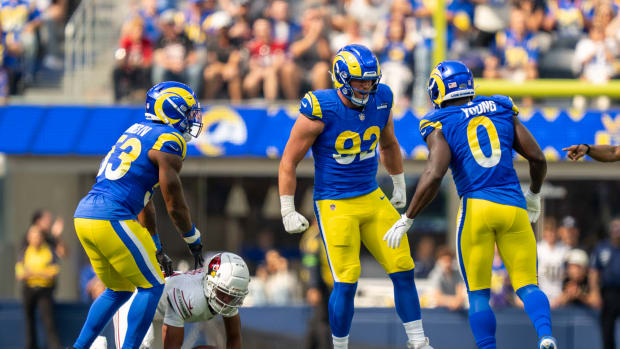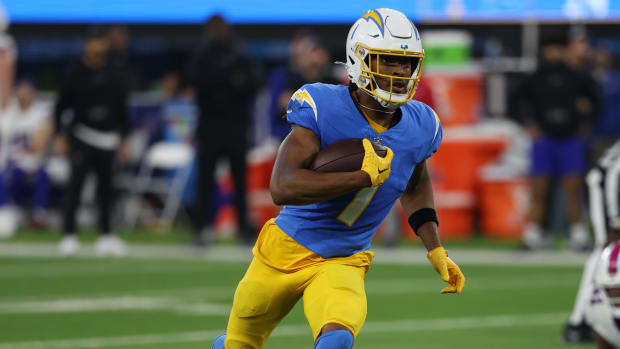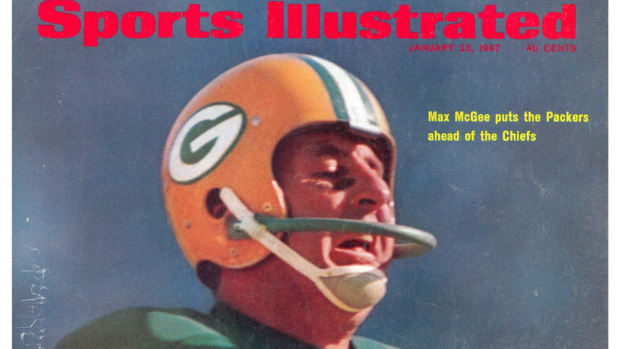
The Super Bowl Returns to Greater Los Angeles
Full Frame is Sports Illustrated’s exclusive newsletter for subscribers. Coming to your inbox weekly, it highlights the stories and personalities behind some of SI’s photography.
To get the best of SI in your inbox every weekday, sign up here. To see even more from SI’s photographers, follow @sifullframe on Instagram. If you missed our story on the similarities and differences between the 2008 Beijing Olympics and the ’22 Games, you can find it here.
Sunday’s Bengals-Rams game will be the eighth Super Bowl played in the Greater Los Angeles area. The Los Angeles Memorial Coliseum hosted two. Then, five more Super Bowls were played at the Rose Bowl in Pasadena, the last coming in 1993.
Each of those games has a unique history and the ties between Hollywood and the NFL run deep. L.A. hosted the first Super Bowl after all. And that game only foreshadowed what a spectacle it would become.
Chris Nashawaty wrote this week on that relationship that although the game would be nowhere near a sellout, NFL commissioner Pete Rozelle had a sense that the Super Bowl’s future “would live or die by how it came across to the 51 million fans watching on TV. To prevent those viewers from turning the channel at halftime, organizers decided to turn to someone who understood the priceless value of razzle-dazzle. Luckily, they were already in Hollywood’s backyard.” Enter: jet-pack pilots. The Super Bowl never looked back.
Jet-packs didn’t quite make it into Tex Maule’s recap of the game in the Jan. 23, 1967, issue of Sports Illustrated. His only quip directly related to Los Angeles dealt with the weather: “[Max] McGee caught the first touchdown on a pattern that worked well all during the warm, windless afternoon in the Los Angeles Coliseum. McGee, Maule added, “reached back with one hand, snapped the ball to his chest and went in for a 37-yard touchdown” from quarterback Bart Starr.
McGee’s performance and the Packers’ dominant second half in a 35–10 win earned him the cover of SI, taken by Walter Iooss Jr.
Six years later, the Super Bowl returned to L.A. ready to crown a historic winner. The undefeated Miami Dolphins completed their 17–0 season in Super Bowl VII with a win over Washington. The environs might have left a bit to be desired, though, as Maule described the game’s 81,706 fans in attendance as “sweltering and smog beset.” Washington head coach George Allen was concerned about the L.A. sun, according to Maule’s story. “What time he had, Allen devoted to the most meticulous preparation. He even sent an associate to the Coliseum to scout the sun for a couple of hours. The man brought back a detailed solar chart,” Maule wrote.
The cover of the Jan. 22, 1973, issue of SI featured Neil Leifer’s image of Dolphins QB Bob Griese, who threw for 88 yards in the 14–7 victory.
Future L.A.-area Super Bowls then moved northwest to Pasadena. And the first one there, Super Bowl XI, didn’t feature that vaunted sun that Allen was so worried about. “Aside from spoiling a lot of the golf games planned by the multitude of NFL owners and their friends,” Dan Jenkins wrote, “the weather obviously threatened to change the nature of the contest. It simply kept raining. And when it wasn’t raining the skies were darker than the smog had ever made them.”
The 32–14 win by the Oakland Raiders over the Minnesota Vikings earned signal-caller Ken Stabler the cover of the Jan. 17, 1977, issue of SI.
Just a few years later, in 1980, the hometown L.A. Rams had a chance to take down the Pittsburgh Steelers at the Rose Bowl, but came up short, losing 31–19 in a game that, Paul Zimmerman wrote, was much closer than the final score indicated.
“If Hollywood, not Pasadena, had been hosting XIV,” Zimmerman wrote, “the Rams would have driven those 83 yards and put the game away, and the losingest team—9–7 on the regular season—ever to come into a Super Bowl would have tasted the golden bubbly.”
A Miami-Washington rematch in 1983 in Super Bowl XVII saw a new outcome. With the Dolphins falling 27–17. Washington fullback John Riggins dominated the game, finishing with 38 carries for 166 rushing yards … and the Feb. 7, 1983, cover of SI.
The New York Giants traveled cross-country to win Super Bowl XXI at the Rose Bowl behind the play of quarterback Phil Simms. The Giants put up 39 points behind Simms’s 22-for-25 day, taking down John Elway and the Denver Broncos.
Then, in 1993, the last Super Bowl played in Pasadena, the Buffalo Bills came to town looking to finally win it all after consecutive Super Bowl losses in the two seasons before. But they were stopped in their tracks by Troy Aikman and the Dallas Cowboys. Aikman won MVP after tossing four touchdowns in a 52–17 win.
And that brings us to 2022. After a 29-year wait for the Super Bowl’s return to Hollywood, it’ll be played Sunday at SoFi Stadium in nearby Inglewood, a $5 billion behemoth that took six years to build and covers more than 3 million square feet.
But not everyone in the neighborhood wants the stadium or the spectacle that comes with it, SI’s John Gonzalez writes. It has displaced longtime residents and businesses whose owners are now getting priced out.
Even so, it’ll continue to be an entertainment hub in America’s preeminent entertainment city, hosting future college-football national title games, concerts, the 2028 Olympics opening and closing ceremonies and more.
The Super Bowl is just another show coming through Los Angeles.
Have questions, comments, or feedback about Sports Illustrated's newsletters? Send a note to josh.rosenblat@si.com.







































